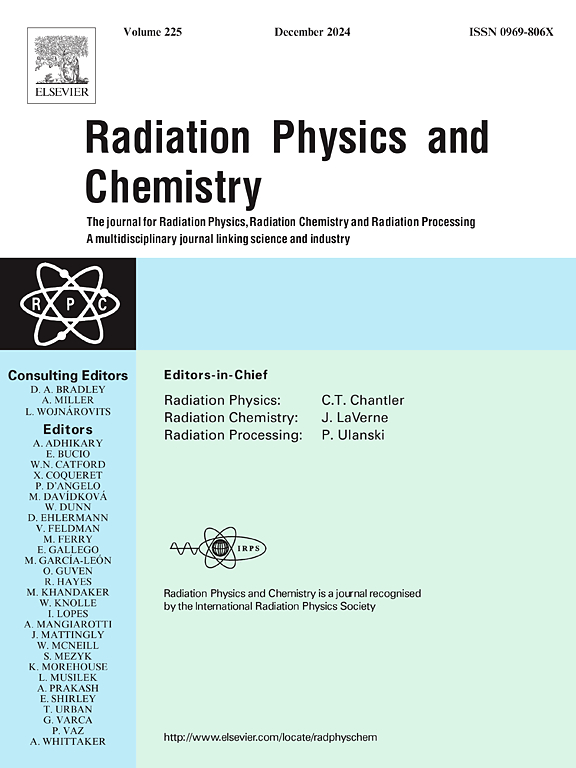A novel analytic procedure for accurate patient surface dose measurement during computed tomography examination: Systematic uncertainty correction related to incident X-ray direction
IF 2.8
3区 物理与天体物理
Q3 CHEMISTRY, PHYSICAL
引用次数: 0
Abstract
For exposure dose management during computed tomography (CT) examinations, measured data of individual patients can provide valuable information. However, it is challenging to measure doses accurately using a dosimeter because the incident direction of X-rays differs in each scan, and therefore the measured dose values show large deviations. This study aimed to develop a methodology to determine surface dose taking into consideration the incident direction of X-rays.
The proposed analytical procedure was as follows: (1) the incident X-ray direction was analyzed from CT image and (2) a dose correction related to incident X-ray direction was performed using a dose correction function. The incident X-ray direction was calculated by analyzing a standard deviation (SD) of the air region on CT image. This analysis was based on the fact that the SD strongly correlated with the incident X-ray direction. The dose correction function was experimentally determined by performing 40 CT scans under each experimental arrangement. The following five conditions were examined: pitch factor (PF) = 1.2 for a cylindrical water phantom, PF = 1.2 for a whole-body phantom, PF = 0.9, 1.2 and 1.5 for a segmented phantom. The validity of the proposed procedure was verified through phantom and patient studies of chest CT examinations, in which examinations at a 120 kV imaging condition were performed using automatic exposure control (AEC). Clinical measurements were performed on 97 patients with a standard body mass index.
We found that the incident X-ray direction under any examination conditions could be analyzed with an uncertainty of 13°. The systematic uncertainty in the measured dose could be eliminated using the dose correction function, which was highly dependent on the examination conditions. In the clinical studies, the variation of the patient surface dose obtained by the proposed procedure was approximately 11% in the standard deviation; this value was about half the value when the original raw data was analyzed without correction. In conclusion, we successfully developed a procedure that can eliminate the systematic uncertainty related to the incident X-ray direction in CT dosimetry.
求助全文
约1分钟内获得全文
求助全文
来源期刊

Radiation Physics and Chemistry
化学-核科学技术
CiteScore
5.60
自引率
17.20%
发文量
574
审稿时长
12 weeks
期刊介绍:
Radiation Physics and Chemistry is a multidisciplinary journal that provides a medium for publication of substantial and original papers, reviews, and short communications which focus on research and developments involving ionizing radiation in radiation physics, radiation chemistry and radiation processing.
The journal aims to publish papers with significance to an international audience, containing substantial novelty and scientific impact. The Editors reserve the rights to reject, with or without external review, papers that do not meet these criteria. This could include papers that are very similar to previous publications, only with changed target substrates, employed materials, analyzed sites and experimental methods, report results without presenting new insights and/or hypothesis testing, or do not focus on the radiation effects.
 求助内容:
求助内容: 应助结果提醒方式:
应助结果提醒方式:


